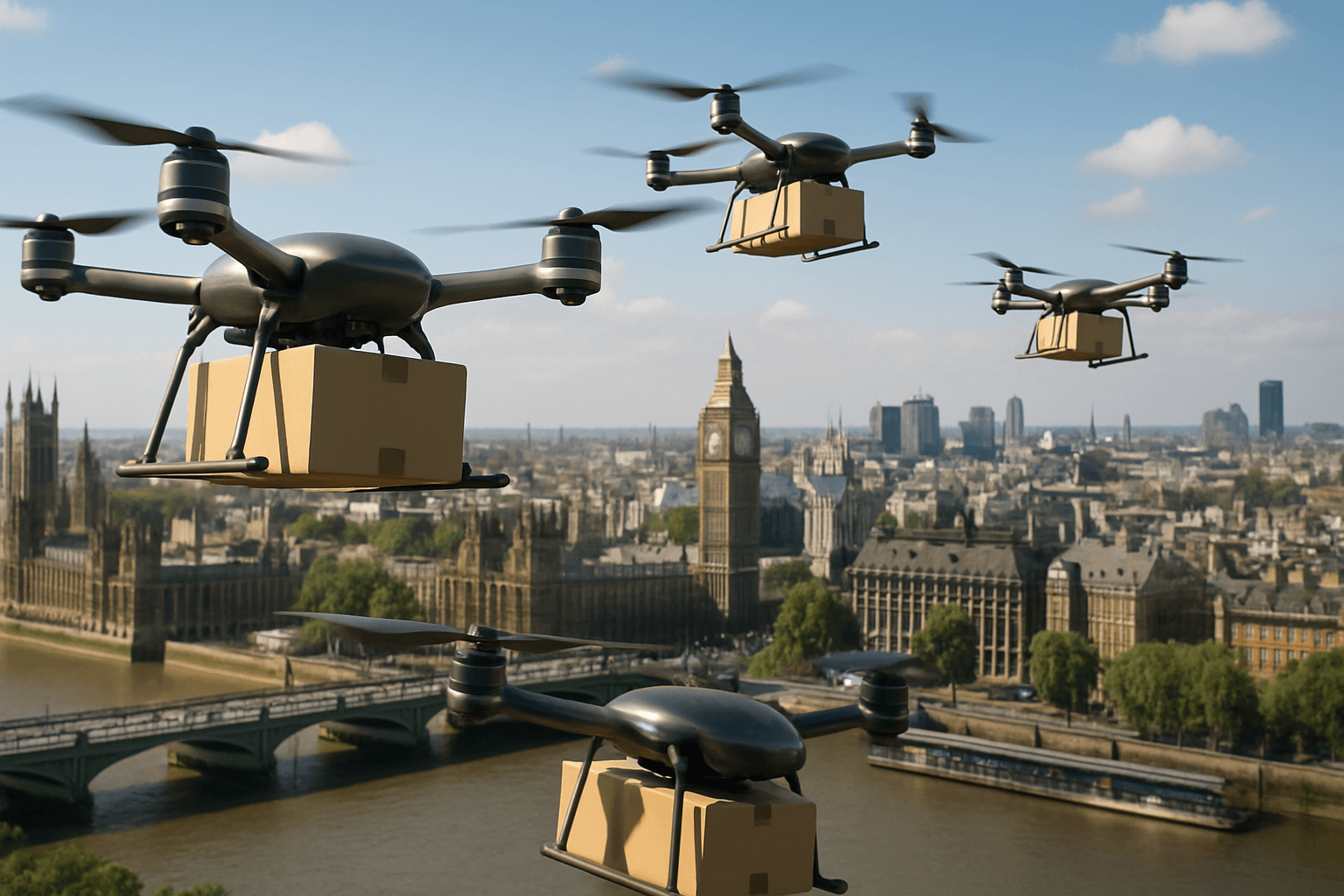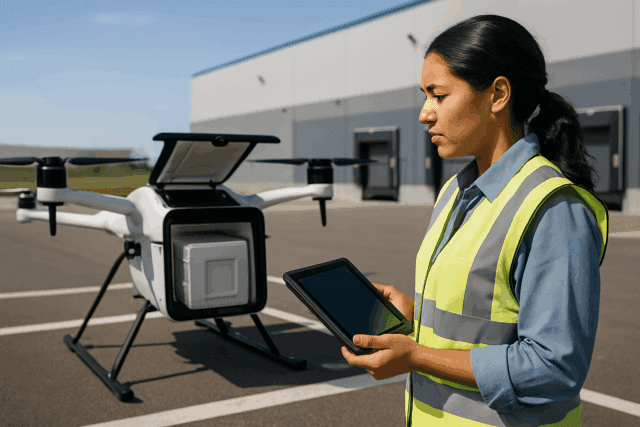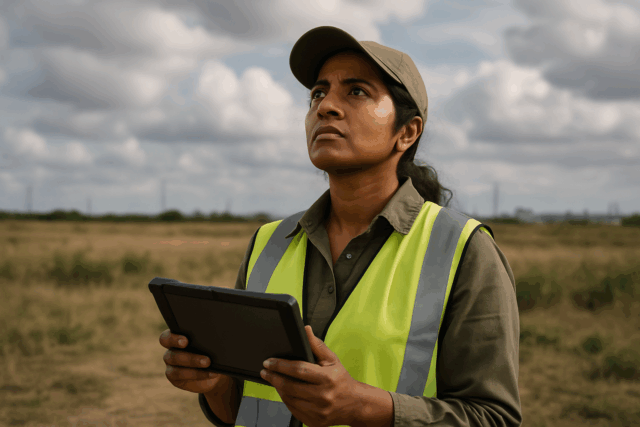Drone delivery systems are rapidly evolving, promising to revolutionize logistics and supply chains across the UK. From delivering essential medical supplies to remote communities to offering faster e-commerce deliveries, drones are poised to transform various sectors. However, the path to widespread adoption is filled with regulatory hurdles, technological challenges, and public perception considerations. This article explores the current state of drone delivery systems in the UK, the key players, the benefits and challenges, and what the future holds for this exciting technology.
What is Drone Delivery?
Drone delivery involves using unmanned aerial vehicles (UAVs), commonly known as drones, to transport goods from a central location to a customer’s doorstep or designated delivery point. Drones can operate autonomously or be controlled remotely, offering a potentially faster, more efficient, and eco-friendly alternative to traditional delivery methods. Once an order is placed, the item is loaded onto the drone, which then navigates to the delivery location using GPS and other sensors. Upon arrival, the drone lowers the package to the ground and returns to its base. (Built In, 2024)
Drone Delivery in the UK: An Overview
The UK is emerging as a key testing ground for drone delivery technology, with several companies and organizations conducting trials and pilot programs. The UK Civil Aviation Authority (CAA) is actively working to create a regulatory framework that supports the safe integration of drones into UK airspace. (Air Cargo News, 2024) The government is also investing in initiatives to advance aviation technology and support the development of commercial drone solutions. (Digital Health, 2025)
Key Players in the UK Drone Delivery Space
Several companies are at the forefront of drone delivery innovation in the UK:
- Amazon Prime Air: Amazon is testing drone deliveries in the UK, with plans to integrate drone delivery into its fulfillment network. (Air Cargo News, 2024) Amazon has chosen Darlington as the first location in the UK to see parcels delivered by drones. (BBC, 2025) The company is working with the CAA to obtain the necessary approvals to fly drones in the airspace. (The National, 2025)
- Royal Mail: Royal Mail has been conducting drone delivery trials to assess the feasibility of using drones to serve remote and island communities. (Royal Mail Group Ltd, 2024) They have partnered with companies like Windracers and Skyports to explore drone delivery solutions. (Skyports, 2024)
- Skyports Drone Services: Skyports specializes in drone deliveries and inspections. (Skyports, 2024) They have been working with Royal Mail in Orkney to establish a daily inter-island mail distribution service. (Skyports, 2024)
- DronePrep: DronePrep is a key player in the UK’s drone delivery sector, working on trials with partners like Royal Mail and the NHS. (FlyPix AI, 2024) They specialize in delivering mail and essential goods to hard-to-reach areas. (FlyPix AI, 2024)
- IONA Drones: IONA Drones focuses on last-mile delivery through an autonomous drone-powered network, targeting underserved areas that are difficult to reach using traditional methods. (FlyPix AI, 2024)
- Medical Logistics UK: Medical Logistics UK is partnering with Skyfarer for medical drone delivery trials, aiming to improve the efficiency of delivering time-sensitive medical supplies to hospitals. (Skyfarer, 2024)
- Windracers: Windracers is a company that has partnered with Royal Mail and HIAL to trial cargo drone delivery services in Orkney, using their unmanned aircraft, the Ultra. (Fleet News, 2024)
Current Drone Delivery Trials in the UK
Several drone delivery trials are underway in the UK, focusing on different applications and regions:
- Orkney Islands: Skyports and Royal Mail have been operating a drone delivery service in the Orkney Islands, providing a daily inter-island mail distribution service. (Skyports, 2024) The project has been extended until at least February 2026. (Skyports, 2024)
- Shetland Islands: Royal Mail conducted drone delivery trials on the Shetland Islands in partnership with Windracers, delivering mail between Tingwall Airport in Lerwick to Unst. (Royal Mail Group Ltd, 2024)
- Isles of Scilly: Royal Mail conducted a trial of a Government-funded “air bridge” from the Cornish mainland to the Isles of Scilly, delivering essential mail, PPE, and COVID testing kits. (Royal Mail Group Ltd, 2024)
- Darlington: Amazon has chosen Darlington as the first location in the UK to launch its drone delivery service, with plans to begin initial flights from its fulfillment center. (BBC, 2025)
The Benefits of Drone Delivery
Drone delivery systems offer several potential advantages over traditional delivery methods:
- Faster Delivery: Drones can navigate directly to their destination, avoiding traffic congestion and other logistical obstacles. (More Than Shipping, 2024) This can significantly reduce delivery times, especially for urgent or time-sensitive items. (The Week, 2024) Amazon claims that its drones will eventually allow it to deliver packages within half an hour of them being ordered. (DHL eCommerce UK)
- Increased Efficiency: Drones can operate continuously without breaks, potentially lowering labor costs and improving overall delivery efficiency. (More Than Shipping, 2024) They can also optimize delivery routes, leading to reduced fuel consumption and emissions. (More Than Shipping, 2024)
- Access to Remote Locations: Drones can reach remote and rural areas that may be difficult to access by traditional vehicles. (The Week, 2024) This is particularly beneficial for delivering essential supplies and services to underserved communities. (The Week, 2024)
- Reduced Environmental Impact: Electric drones produce fewer emissions than traditional delivery vehicles, making them a more sustainable option for last-mile deliveries. (More Than Shipping, 2024) Using drones can help reduce reliance on vehicles, which contributes to reducing transportation emissions and curbing climate change. (The Week, 2024)
- Cost Savings: Drone delivery services have lower operating costs compared to vehicle delivery services. (Wipro, 2023) Analysts estimate that the operating costs for a drone delivery service are 40% to 70% lower than a vehicle delivery service model. (Wipro, 2023)
- Contactless Delivery: Drones offer a contactless delivery solution, which is particularly valuable during health crises, ensuring safe delivery without physical interaction. (More Than Shipping, 2024)
The Challenges of Drone Delivery
Despite the numerous benefits, drone delivery systems also face several challenges:
- Regulatory Issues: Drone operations are subject to strict regulations, including requirements for visual line of sight, airspace restrictions, and safety certifications. (The Week, 2024) Navigating the regulatory landscape and obtaining the necessary approvals can be a complex and time-consuming process. (eCourier, 2025)
- Safety Concerns: Ensuring the safety of drone operations is paramount. (eCourier, 2025) Drones must be able to detect and avoid obstacles, operate safely in various weather conditions, and prevent accidents that could cause harm to people or property. (IoT For All, 2023)
- Privacy Risks: The use of cameras and GPS technology on drones raises privacy concerns among the public. (The Week, 2024) People may be uncomfortable with drones flying over their neighborhoods and collecting data. (The Week, 2024)
- Security Risks: Drones are vulnerable to hacking and misuse, which could compromise their navigation systems and lead to theft or accidents. (FW Logistics, 2023) Protecting drones from cyber threats is essential to ensure the security of drone delivery operations. (FW Logistics, 2023)
- Logistical Issues: Drone delivery can be difficult to implement in densely populated areas, where maneuvering around buildings and other obstacles can be challenging. (The Week, 2024) Delivering packages to specific apartments or multi-story buildings may also require human intervention. (The Week, 2024)
- Public Acceptance: Gaining public acceptance of drone delivery is crucial for its widespread adoption. (Wipro, 2023) Many consumers are still not ready to accept drone deliveries due to privacy, safety, and security concerns. (Wipro, 2023)
- Environmental Hazards: High winds and rain can lead to crashes or diminished battery life, which can affect drone deliveries. (IoT For All, 2023)
- Range and Battery Constraints: Battery constraints mean that drones can only travel limited distances between charges. (IoT For All, 2023)
- Cost Barriers: The purchase price of a drone fleet, and hiring pilots comes at a steep cost. (IoT For All, 2023)
The Future of Drone Delivery in the UK
Despite the challenges, the future of drone delivery in the UK looks promising. The CAA is developing a roadmap for integrating drones into UK airspace, with plans to enable routine beyond visual line of sight (BVLOS) operations by 2027. (UK Civil Aviation Authority, 2024) The government is also investing in research and development to advance drone technology and support its adoption in various sectors. (Digital Health, 2025)
Key Trends Shaping the Future of Drone Delivery
Several key trends are shaping the future of drone delivery in the UK:
- BVLOS Operations: Enabling BVLOS operations is crucial for unlocking the full potential of drone delivery. (eCourier, 2025) BVLOS operations would allow drones to fly longer distances and serve more remote areas. (eCourier, 2025)
- Autonomous Navigation: Advancements in autonomous navigation systems are enabling drones to fly, avoid obstacles, and deliver goods without human intervention. (Fly Eye, 2024)
- 5G Connectivity: The rollout of 5G networks is providing the high-bandwidth, low-latency connectivity needed to support drone operations in rural areas. (Skyports, 2024)
- Drone Traffic Management Systems: Developing drone traffic management systems is essential for ensuring the safe and efficient operation of multiple drones in the same airspace. (UK Civil Aviation Authority, 2024)
- Standardized Regulations: Establishing standardized regulations for drone operations across the UK is crucial for creating a level playing field and fostering innovation. (The Week, 2024)
Potential Applications of Drone Delivery in the Future
Drone delivery has the potential to transform various sectors in the UK:
- Healthcare: Drones could be used to deliver essential medicines, medical supplies, and blood samples to hospitals and remote communities. (Digital Health, 2025)
- E-commerce: Drones could offer faster and more efficient delivery of online orders, particularly for time-sensitive items. (The Week, 2024)
- Logistics: Drones could be used to transport goods between warehouses and distribution centers, streamlining supply chains and reducing delivery times. (More Than Shipping, 2024)
- Emergency Services: Drones could be deployed to deliver emergency supplies and equipment to disaster-affected areas. (More Than Shipping, 2024)
- Infrastructure Inspection: Drones could be used to inspect infrastructure such as bridges, power lines, and wind turbines, improving safety and reducing maintenance costs. (Fleet News, 2024)
Conclusion
Drone delivery systems hold immense potential to revolutionize logistics and supply chains in the UK. While challenges remain, ongoing trials, technological advancements, and regulatory developments are paving the way for a future where drones play a significant role in delivering goods and services across the country. As the technology matures and regulations evolve, drone delivery is poised to become an increasingly common sight in the UK skies, offering faster, more efficient, and sustainable delivery solutions for businesses and consumers alike.





